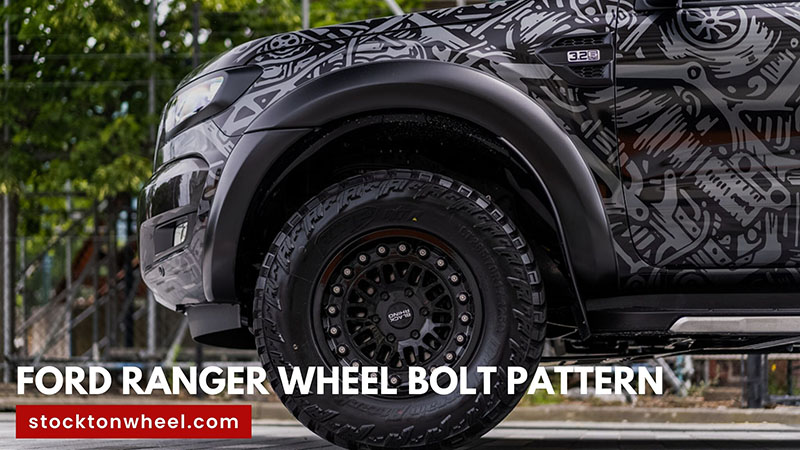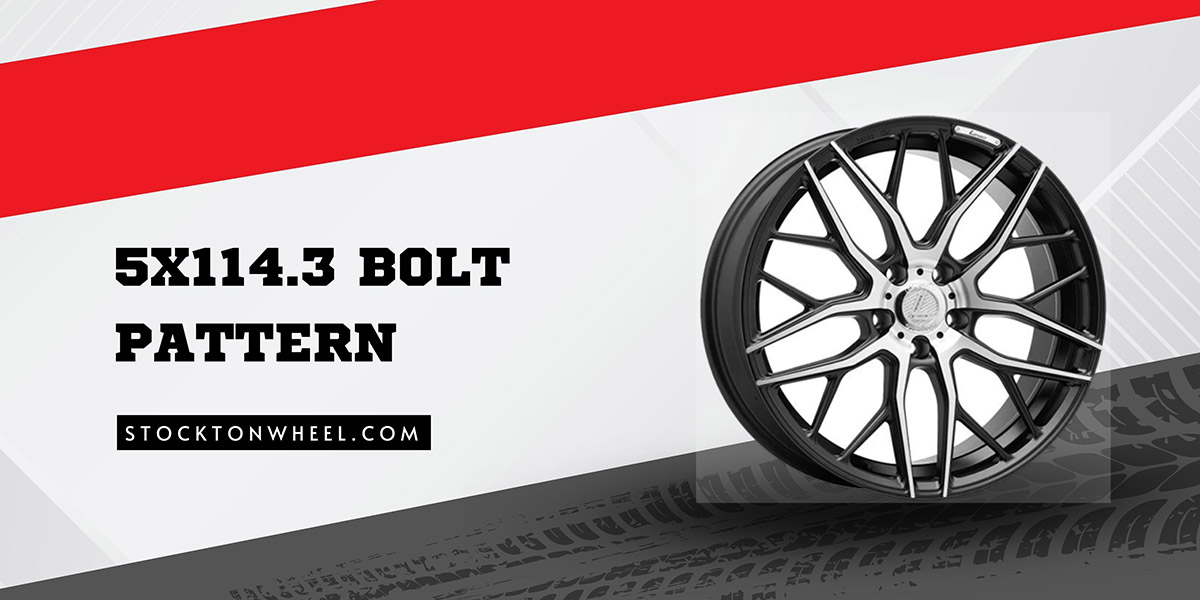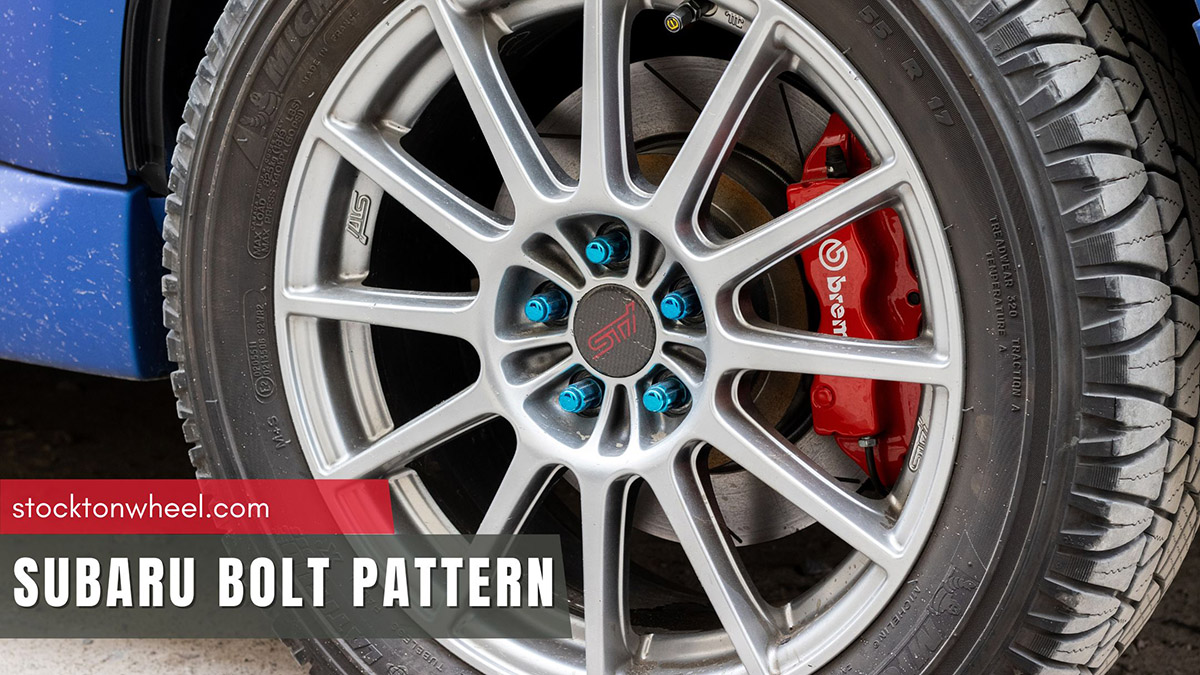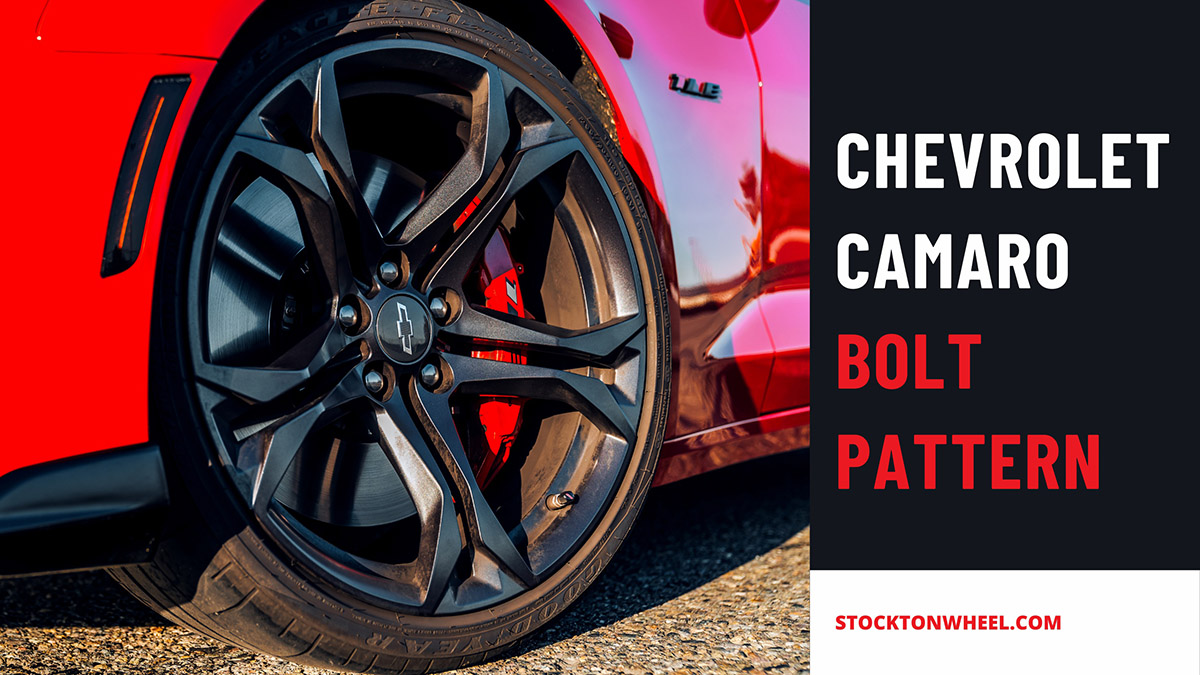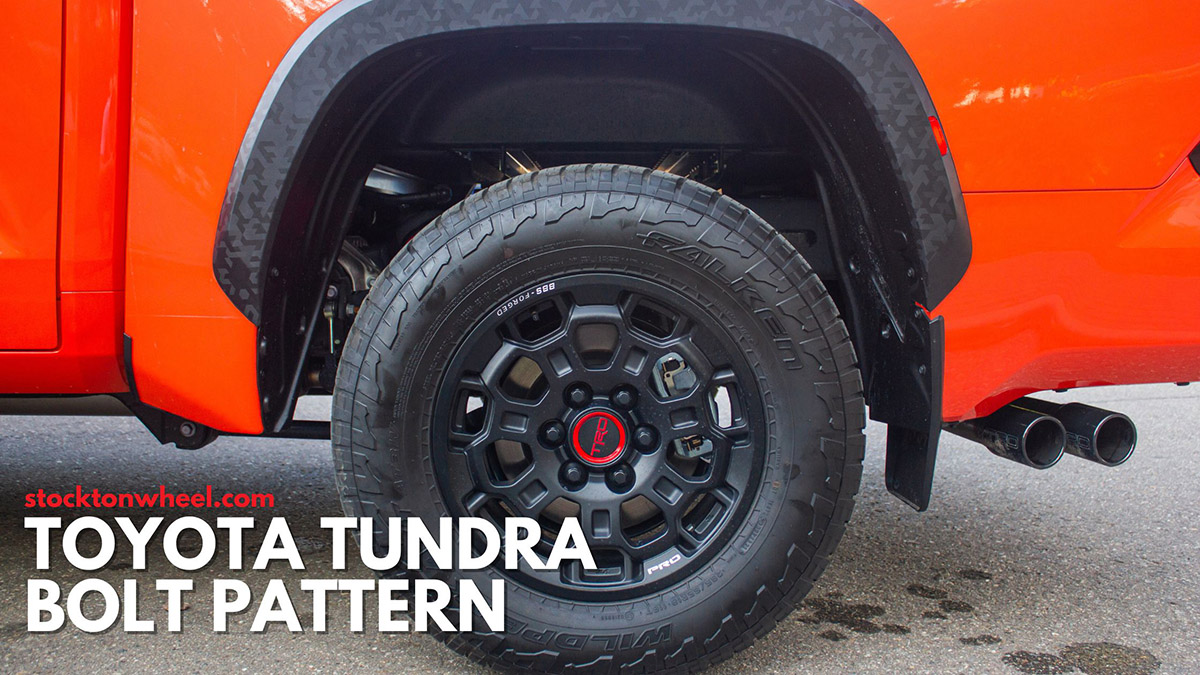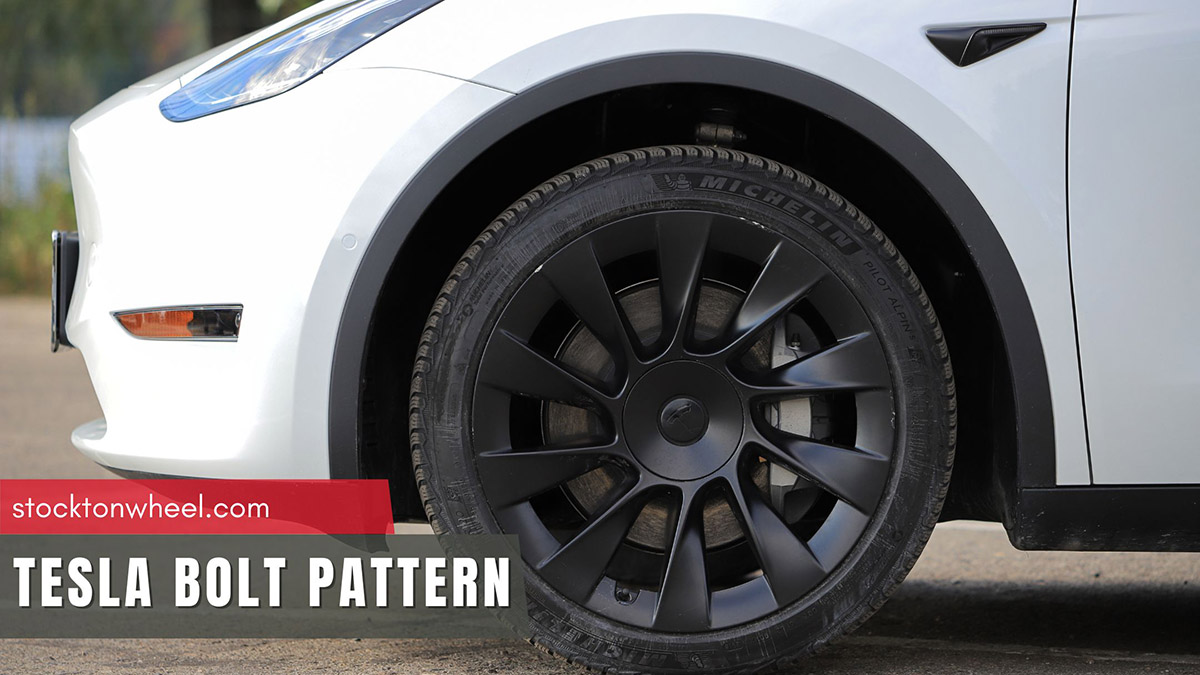Ford Ranger – a compact pickup truck lineup is no stranger to drivers, especially in the US market, where the brand has more than 40 years of existence. This car line has undergone many upgrades, but its lug design has only changed 2 times. Scroll down to learn the Ford Ranger wheel bolt pattern.
In this article:
What Is The Bolt Pattern For A Ford Ranger?
Ford Rangers launched from 2019 feature a 6×139.7 or 6×5.5 bolt pattern, meaning 6 factory studs on a lug circle with a diameter of 5.5 inches. However before that, most models had another wheel design.
From 1982 to 2012, the first three generations came with a 5×4.5 inch (or 5×114.3 mm) pattern. In detail, each wheel featured 5 lug holes forming an imaginary circle with a diameter of 4.5″. Some diesel upgrades served the 6×5.5″ (or 6×139.7 mm) pattern starting from the Facelift III.
Since 2019, the manufacturer has decided to unify the lug design on all engine options to 6×5.5 inches (6×139.7mm) across all models regardless of sale regions.
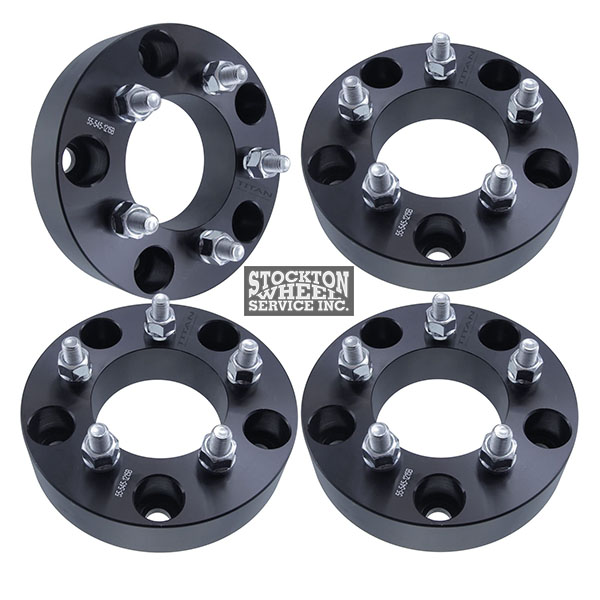
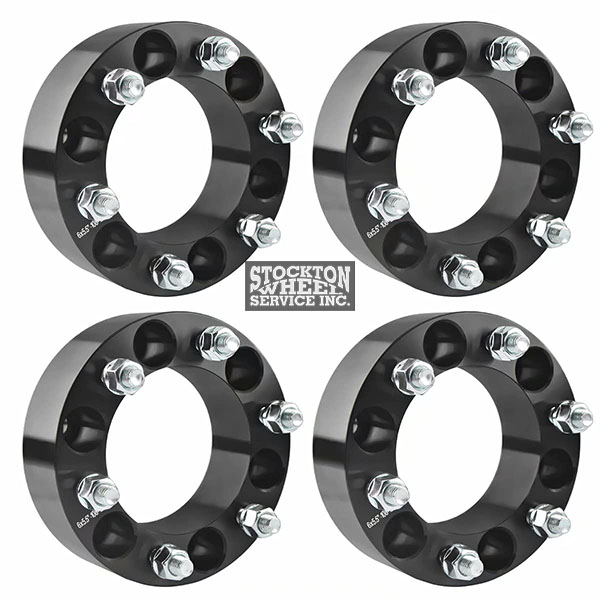
Key Specifications Of Ranger’s Wheel For Fitment Purposes
Though the bolt pattern stays consistent for some generations, the wheel parameters differ. It’s not straightforward to decide what rims fit the Ford Rangers since this feature varies by engine selection, as you’ll see below.
We have listed important specifications for your preferences, including center hole diameter, torque, wheel fastener, etc. Please note that our sections will mainly focus on gas engines intended for the domestic market (USDM only).
1st-Generation (1982 to 1992)
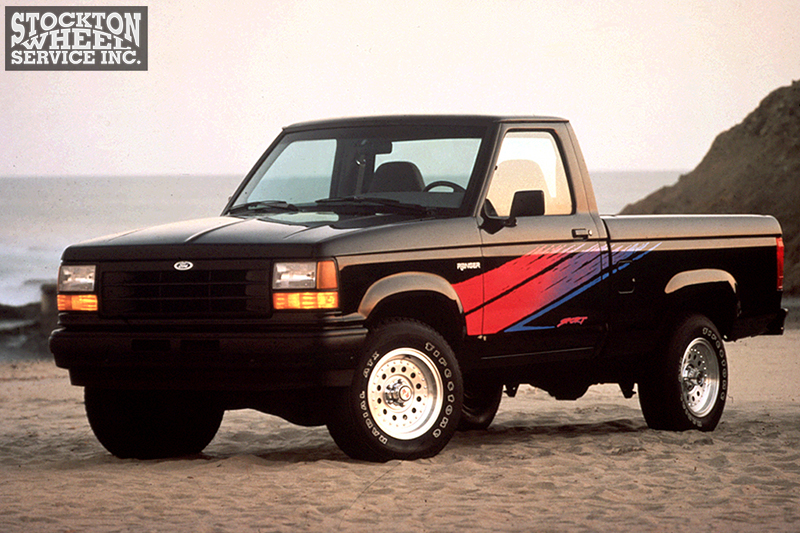
The first Rangers came out in 1982 with a compact, boxy design. The light truck chassis became the model for many other product lines later, such as the Bronco II, Explorer Sport Trac, or Aetosaur.
However, the 1989-1992 Ford Ranger generation underwent a major upgrade that led to the introduction of Facelift models. The factory wheels have not changed much except for the tire and rim size range corresponding to the engine.
- Center bore diameter: 70.6 mm.
- Wheel fastener: Lug nut
- Stud size: 1/2″ – 20 UNF
- Torque spec (estimated): 100 lb-ft (135 Nm)
- Tire & rim sizes:
| Engine Options | Tire Dimension | Rim Size | Bolt Pattern | |
Pre-facelift (1982 – 1988) | 2.0L I4 4WD 2.3L I4 2WD 2.3L I44WD 2.9L V6 4WD | 195/75R15 or 205/75R15 | 5Jx15 ET31 or 6Jx15 ET25 | 5×4.5″ (5×114.3mm) |
| 2.0L I4 2WD | 195/70R14 or 205/70R14 | 5.5Jx14 ET31 or 6Jx14 ET25 | 5×4.5″ (5×114.3mm) | |
| Facelift (1989 – 1992) | 2.3L I4 2WD 2.9L I4 2WD | 195/70R14 or 205/70R14 | 5.5Jx14 ET31 or 6Jx14 ET25 | 5×4.5″ (5×114.3mm) |
| 2.3L I4 4WD 2.9L I4 4WD 4.0L V6 4WD | 215/75R15 or 225/75R15 | 6Jx15 ET25 or 7Jx15 ET12 | 5×4.5″ (5×114.3mm) |
2nd-Generation (1993 to 1997)
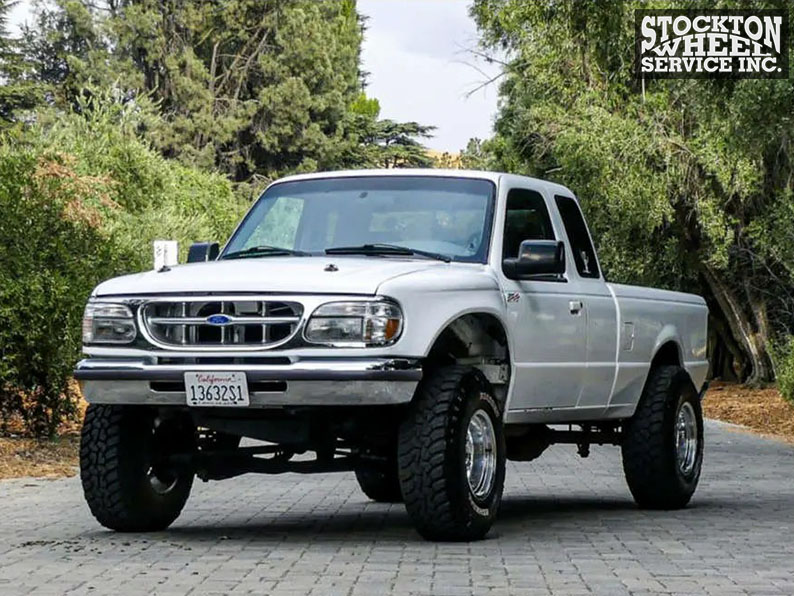
The 2nd-generation Ford Ranger has undergone many changes in appearance and strength. However, the wheel specs were still the same as the first launch.
- Center bore diameter: 70.6 mm.
- Wheel fastener: Lug nut
- Stud size: 1/2″ – 20 UNF
- Torque spec (estimated): 100 lb-ft (135 Nm)
- Tire & rim sizes:
| Engine Options | Tire Dimensions | Rim Size | Bolt Pattern |
| 2.3L I4 4×2 3.0L V6 4×2 4.0L V6 4X2 | 195/70SR14, 215/70SR14, or 225/70SR14 | 5.5Jx14 ET12 or 6Jx14 ET12 | 5×4.5″ (5×114.3mm) |
| 2.3L I4 4×4 3.0L V6 4×4 4.0L V6 4×4 | 215/75SR15, 235/75SR15 | 6Jx15 ET12, or7Jx15 ET12 | 5×4.5″ (5×114.3mm) |
3rd-Generation (1998 to 2019)
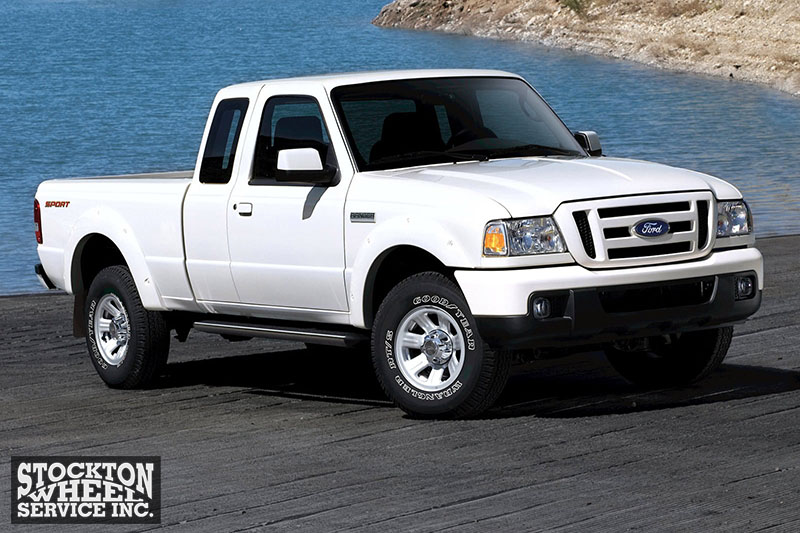
Like two predecessors, the 3rd generation of Ranger witnessed zero changes in wheel parameters. However, during the lengthy production run, the manufacturer carried out 3 upgrades, thus providing the market with a wide choice of engines.
- Center bore diameter: 70.6 mm.
- Wheel fastener: Lug nut
- Thread size: 1/2″ – 20 UNF
- Torque spec (estimated): 100 lb-ft (135 Nm)
- Tire & rim sizes:
| Engine Options | Tire Dimensions | Rim Size | Bolt pattern | |
Pre-facelift (1998 – 2000) | 2.5L I4 4×2 3.0L V6 4×2 4.0L V6 4×2 | 205/75SR14 or 225/70SR14 | 5.5Jx14 ET12 or 6Jx14 ET12 | 5×4.5″ (5×114.3mm) |
| 3.0L I4 4×4 4.0L V6 4×4 | 215/75SR15 or 235/75SR15 | 6Jx15 ET12 or 7Jx15 ET12 | 5×4.5″ (5×114.3mm) | |
| Facelift I(2001 – 2003) | 2.5L I4 4×2 3.0L V6 4×2 4.0L V6 4×2 | 225/70SR15 | 6Jx15 ET12 | 5×4.5″ (5×114.3mm) |
| 3.0L V6 4×4 4.0L V6 4×4 | 235/75SR15 | 6Jx15 ET1 | 5×4.5″ (5×114.3mm) | |
| Facelift II & III (2004 – 2012) | 2.3L I4 4×2 3.0L V6 4×2 4.0L V6 4×2 | 225/70SR15 | 6Jx15 ET12 | 5×4.5″ (5×114.3mm) |
| 3.0L V6 4×4 4.0L V6 4×4 | 245/75R16 | 7Jx16 ET12 | 5×4.5″ (5×114.3mm) |
4st-Generation (2019 To Present)
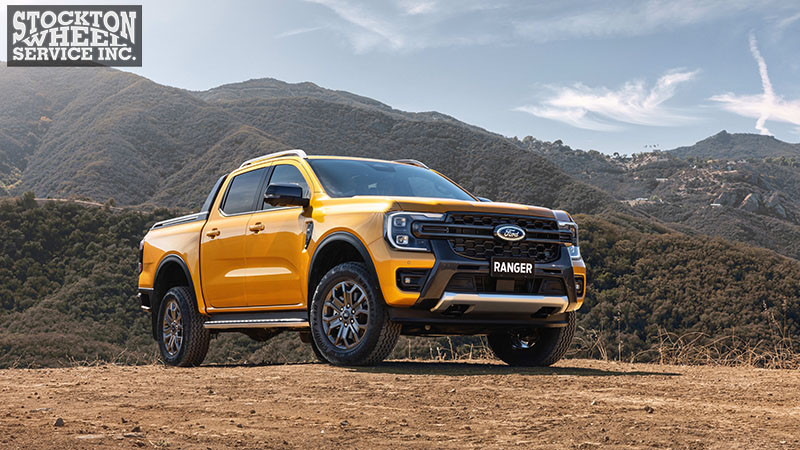
As the beginning of the new T6 platform, the 6th generation Ranger is an all-new change in bolt pattern and wheel specs.
- Hub bore diameter: 93.1 mm.
- Wheel fastener: Lug nut
- Thread size: M12 x 1.5
- Torque spec (estimated): 100 lb-ft (135 Nm)
- Tire & rim sizes:
| Engine Options | Tire Size | Rim Size | Bolt Pattern |
| 2.3L I4 EcoBoost | 255/70R16, 255/65R17,265/65R17, or LT265/65R17 | 7Jx16 ET55 or 7.5Jx17 ET55 | 6×5.5″ (6×139.7mm) |
FAQs
What Vehicles Have A 6×139.7 Bolt Pattern?
Not only modern Ford Ranger, but you can also find the 6-lug models in many other vehicles, such as Acura SLX 1995 – 1999, Cadillac Escalade 1999 – 2000, Chery Grand Tiger 2011 – 2014, Foton View G9 2016 – 2020, etc.
What Vehicles Have 5×114.3 Wheels?
Many manufacturers referred to 5×114.3 wheels for their outputs, including Ford LTD 1995 – 2007, Honda Accord Crosstour 2010 – 2014, Hyundai Sonata Hybrid 2011 – 2023, etc.
Conclusion
Ford Ranger bolt pattern plays an important role in tire assembly and maintenance because you need to determine the correct sequence when working with wheel lug nuts on the vehicle.
It would help to include additional wheel specs when investing in new tires, rims, or custom wheels. Regardless of your purpose, we hope our article is useful in achieving wheel fitment in your case.
See more:

